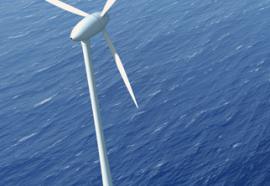Atlantic Wind Connection
Treading Water
With no guidance yet from FERC, Atlantic Wind is forced to wait.
Touted as the nation’s first-ever “offshore transmission highway,” the proposed Atlantic Wind Connection (AWC) high-voltage power line in theory could foster dozens of wind farms in shallow offshore costal waters up and down the mid-Atlantic seaboard — but only if federal regulators can get buy-in for new transmission planning rules that give precedence to large, macro projects aimed at boosting renewable energy. Otherwise, the grid project might never pass muster with the engineers charged with OK’ing new power lines, since the AWC is probably not needed to maintain reliability, and likely would not make electricity rates any cheaper for East Coast ratepayers. Should wind energy developers start with massive grid projects to attract clusters of wind turbines, or should the wind farms come first?
Chicken-Egg Solution
Solar and wind developers learn to shift project risk to the grid.
As Google says, “the wind cries for transmission.” But the opposite is true as well: without new wind and solar energy projects, we would not need to build so many new transmission lines. Each side needs the other, yet neither dares declare too soon, and risk weakening its bargaining position. That is, until one utility in California found a way to break the impasse, with each side scratching the other’s back — thus putting to rest the age-old question, “Which came first, the . . . ?”


